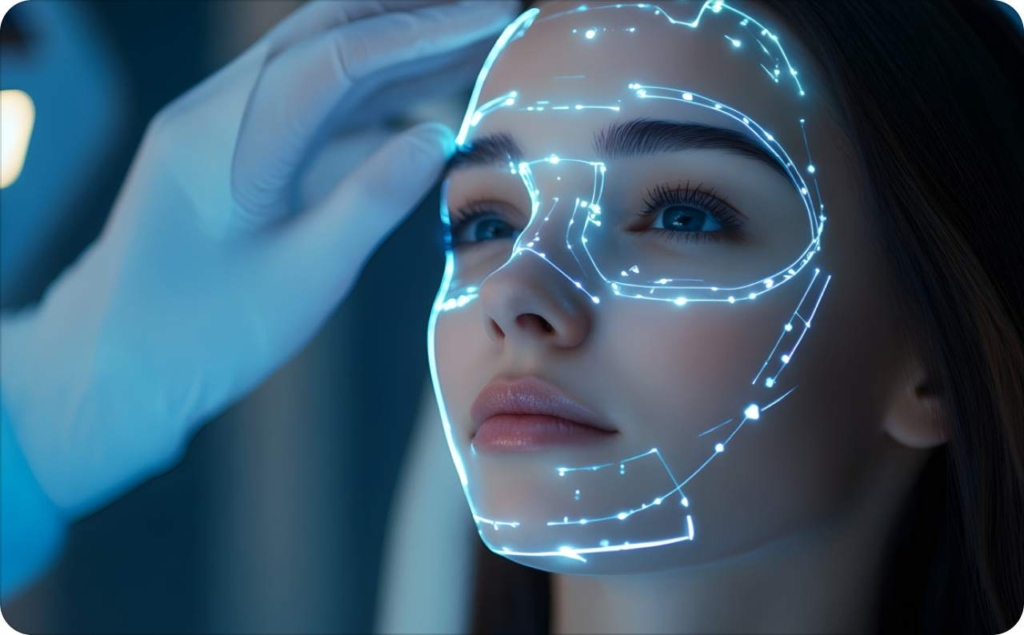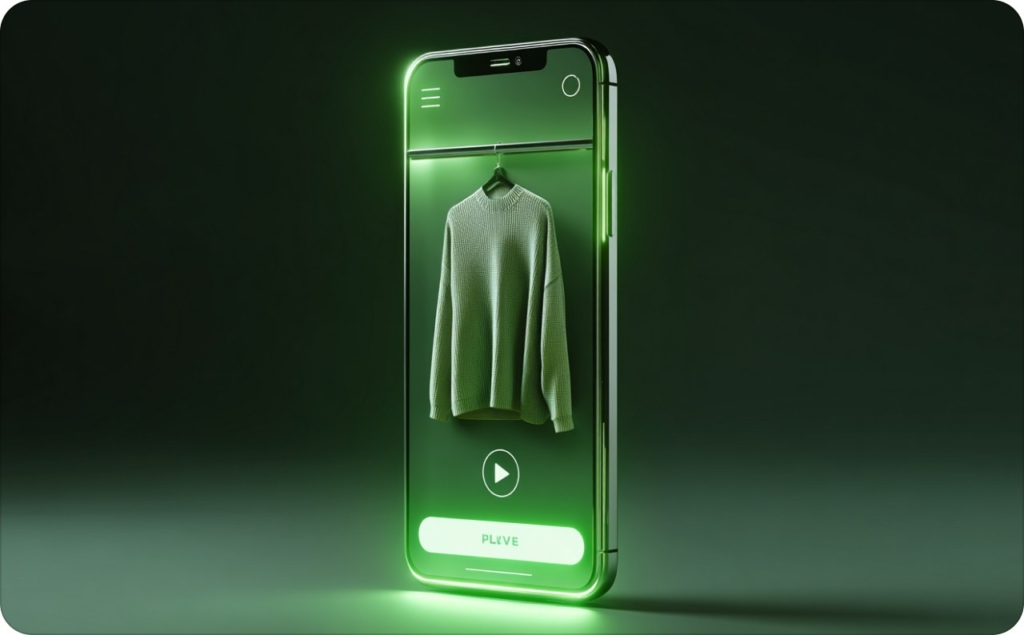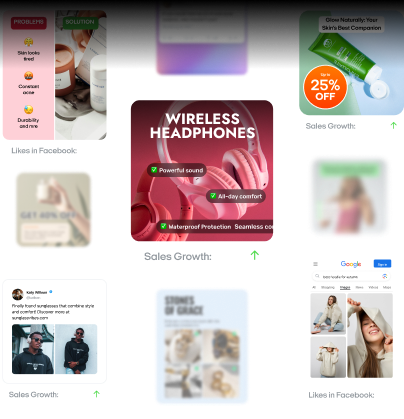Healthcare advertising: 2 main strategies & creative campaign examples
How do healthcare brands win trust and stand out? Zeely AI explores two core advertising strategies with inspiring creative campaign examples that connect with real patient needs.
What if your next healthcare campaign didn’t just pass legal, what if it moved people? In an industry where every word is scrutinized and every claim must survive regulatory firewalls. The best healthcare advertising isn’t just legal — it’s alive. It educates without overwhelming, it earns trust without jargon, and yes, it inspires.
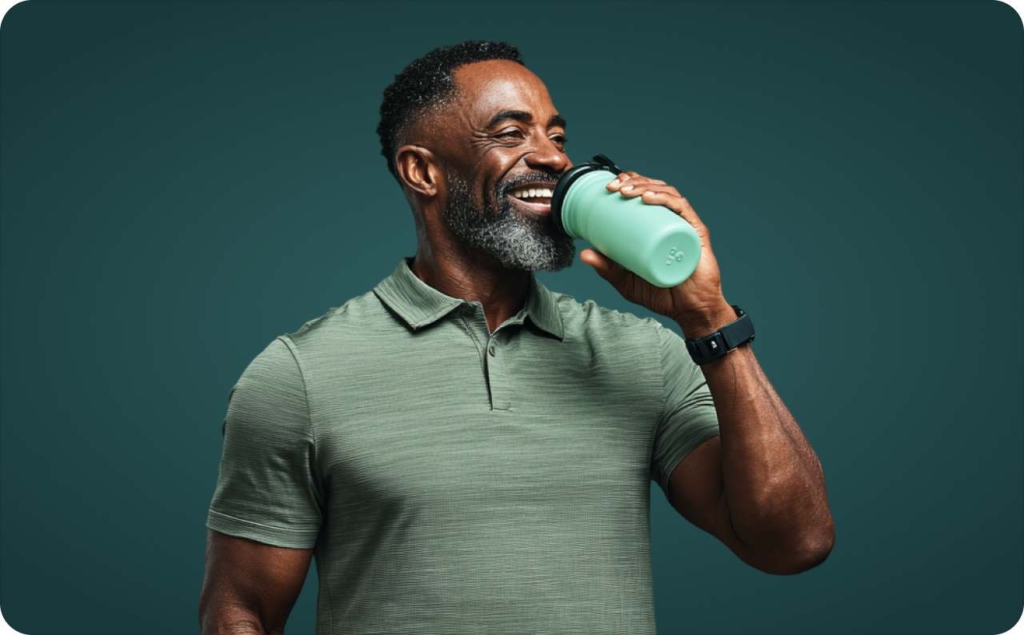
What’s healthcare advertising?
Launching a healthcare campaign isn’t like building one for fashion or tech. In this industry, your creative team doesn’t just answer to the client, they answer to regulators, medical reviewers, and sometimes lawyers. So, what is healthcare advertising?
Healthcare advertising refers to regulated marketing efforts that promote medical services, products, or health education to patients, professionals, or the general public. It includes everything from pharmaceutical ads and hospital campaigns to wellness apps and preventive care promotions.
But here’s what sets it apart: compliance isn’t optional — it’s foundational. Whether you’re developing a print campaign or a digital video ad, every message must pass through approval pathways defined by authorities like the FDA in the U.S., EMA in Europe, and HIPAA, which governs how patient data is handled in personalized targeting.
That regulatory load often stifles creativity, or at least, it feels that way. Most teams struggle not with a lack of ideas, but with finding legal ways to express them. And when regulations get in the way of innovation, the result is often bland, safe, and forgettable content.
High-performing healthcare brands are proving that creativity can thrive within the rules. By focusing on ethical storytelling, patient engagement, and strategic messaging frameworks, they create campaigns that pass compliance checks and still connect emotionally.
Why healthcare advertising matters
The value of strategic healthcare advertising goes far beyond awareness. According to Nielsen Healthcare, brands that invest in multichannel campaigns see up to a 30% increase in patient acquisition, especially when they balance storytelling with regulatory accuracy.
These campaigns don’t just inform. They shape perception, reduce fear, and build trust with patients. Whether you’re launching a new treatment for chronic illness or encouraging vaccine awareness, your ad is competing for attention in a world of skepticism, stress, and misinformation.
And the most successful campaigns share something in common: they use data-driven creative strategies that respect the law but speak to the heart. They work across channels — social, mobile, print, and are engineered to meet people where they are. Think personalization without privacy violations, or visual storytelling that survives legal review. If you’re managing pharma budgets or leading a creative team, understanding the ROI of healthcare advertising is essential.
Inspirational healthcare advertising campaigns
Healthcare advertising is often boxed in by regulation, but the best campaigns break through with creativity, emotion, and strategic precision. From award-winning pharma ads to deeply human brand messages, the examples in this section prove that it’s possible to inspire, educate, and earn results without compromising compliance. Let’s explore the healthcare campaigns that have set the bar and uncover what made them both iconic and effective.
Award-winning & influential examples
Have you ever looked at a healthcare ad and thought, “That actually moved me”? While many campaigns in this space feel clinical or overly cautious, a few standout examples have broken through the noise, earning not just attention, but awards and measurable results.
Dr. Kate Granger’s #hellomynameis campaign
Started in 2013 by UK geriatrician Dr Kate Granger following her cancer diagnosis, this campaign encouraged all NHS staff to introduce themselves by name to each patient, addressing a key gap in compassionate care and making empathy actionable.
Executional simplicity:
- A single, memorable hashtag: #hellomynameis
- Social media spread via Twitter and healthcare networks
- Commitment: name + role + “how I can help” intro
Results:
- Over 2.5 billion Twitter impressions
- Endorsed by 400,000+ healthcare workers across 90+ UK and international organizations by early 2015
- Sparked annual “Hello My Name Is…” Day observances and led to creation of the Kate Granger Awards for Compassionate Care in NHS England
Best practice takeaway: A simple behaviour change — introducing oneself — can have massive cultural impact. When empathy becomes a policy, not just good intention, it scales organically and visibly.
Pfizer: “Science Will Win”
Launched during the height of COVID-19, Pfizer’s “Science Will Win” campaign elevated pharma advertising to a new level. Developed in collaboration with VMLY&R and McCann, the campaign blended urgency with hope, positioning Pfizer as both a scientific authority and a human-centric innovator.
Creative strategy: The campaign used voiceovers from scientists, patients, and healthcare professionals, layered over kinetic visuals and ambient cinematic scores. It moved away from fear-based messaging, opting instead to inspire collective confidence in medical science.
Performance Metrics:
- 2+ billion global impressions across digital, broadcast, and out-of-home
- 24% increase in public trust ratings for Pfizer within three months
- 400%+ increase in positive social sentiment year-over-year
Awards: Cannes Lions Health shortlist, Clio Health Finalist, PRWeek Purpose Awards.
Best practice takeaway: In moments of public uncertainty, healthcare brands that lead with purpose and clarity, and avoid jargon, can meaningfully elevate public trust. Pfizer showed that pharma advertising doesn’t need to choose between credibility and empathy.
Kaiser Permanente: “Thrive”
The long-running “Thrive” platform by Kaiser Permanente is a masterclass in integrated, multicultural healthcare marketing. Launched in 2004 and continuously adapted to evolving cultural norms, “Thrive” promotes holistic well-being rather than reactive care, blending prevention, inclusion, and emotional relevance into every touchpoint.
Evolution strategy:
- Originally television-driven, it now integrates mobile-first content, Spanish-language versions, family-centric narratives, and community-based health storytelling
- Key message: “Live well and thrive,” positioning health as an empowering lifestyle choice, not a clinical process
Performance:
- Ranked #1 in brand recall in its markets for over 7 years
- 14% increase in new member acquisition in regions with high Thrive ad saturation
- Significant improvements in perception of preventative care access among multicultural segments
Awards: Effie Gold, Multicultural Excellence Award.
Best practice takeaway: Longevity in healthcare advertising comes from adaptive storytelling, staying culturally relevant, audience-centric, and emotionally resonant across formats and communities.
Emotional & visual storytelling in health ads
What makes a health message stick? It’s not the fine print — it’s the feeling behind the story. Emotionally resonant and visually engaging healthcare ads cut through complex jargon and connect with patients on a human level. But achieving that within legal boundaries isn’t easy.
Cleveland Clinic: “Empathy”
Cleveland Clinic’s “Empathy” video is often cited in advertising textbooks and medical communications workshops alike. Why? Because it rewrote the rules of what hospital marketing could look like. There was no voiceover. No selling. No mention of services. Just a series of patients, nurses, and visitors, accompanied by simple captions revealing their inner thoughts — fear, grief, hope, joy.
Executional simplicity: The video relied on minimal camera movement, muted hospital lighting, and a poignant piano score to maintain focus on emotion over production.
Results:
- 5M+ organic YouTube views in its first year, without paid promotion
- Used in over 1,200 global healthcare training programs as an example of empathy in practice
- Drove an 18% increase in direct traffic to Cleveland Clinic’s wellness blog and patient support pages
Best practice takeaway: Storytelling doesn’t require narration when the visuals are grounded in lived experience. In regulated spaces, subtlety can drive deeper engagement than persuasion.
Pfizer: Patient education & visual literacy
Pfizer’s patient education video series demonstrates the power of visual storytelling in simplifying complex treatments. These animated explainer videos use calm voiceovers, soft color palettes, and icon-based infographics to demystify mechanisms of action, drug timelines, and potential side effects.
Strategic format design:
- Designed to be HIPAA-compliant, meaning no personalized health data or testimonials
- Deployed across doctor’s offices, patient portals, YouTube, and social media
- Optimized for mobile and in-office TV screens
Results:
- 72% retention rate for videos under 90 seconds
- 3x engagement compared to PDF-format patient instructions
- 40% increase in patient-reported clarity of treatment understanding
Best practice takeaway: When patients understand their care journey, they trust it more. Visuals must do more than decorate — they must clarify, calm, and comply.
Multi-channel approaches & digital innovations
If you’re still treating digital and traditional channels as separate silos, your healthcare campaign is likely falling short. Today’s most effective advertisers use integrated, data-powered strategies that span TV, social, mobile, and programmatic — all tailored to individual patient journeys.
Johnson & Johnson: “Champions of Science”
Johnson & Johnson’s “Champions of Science” campaign is a prime example of how omnichannel storytelling can elevate brand relevance and perception in a science-forward yet human-centric way. The campaign spotlighted scientists, medical breakthroughs, and health innovations, while using platform-specific content customization to ensure maximum impact.
Execution strategy:
- TV & CTV: Long-form narrative videos showcasing scientific milestones and humanitarian efforts
- YouTube & Instagram: Short-form storytelling with subtitles and scroll-stopping visuals for younger, mobile-first viewers
- LinkedIn: Thought leadership articles and B2B-style video snippets targeting HCPs and medical professionals
- Personalized retargeting: Used Google and Meta pixel data to retarget users who interacted with earlier content with deeper narrative layers or CTAs
Results:
- 46% higher engagement compared to single-channel benchmarks
- 2.1x increase in time spent with branded video content on mobile
- Elevated brand perception in science trust metrics, especially among Gen Z and Millennial audiences
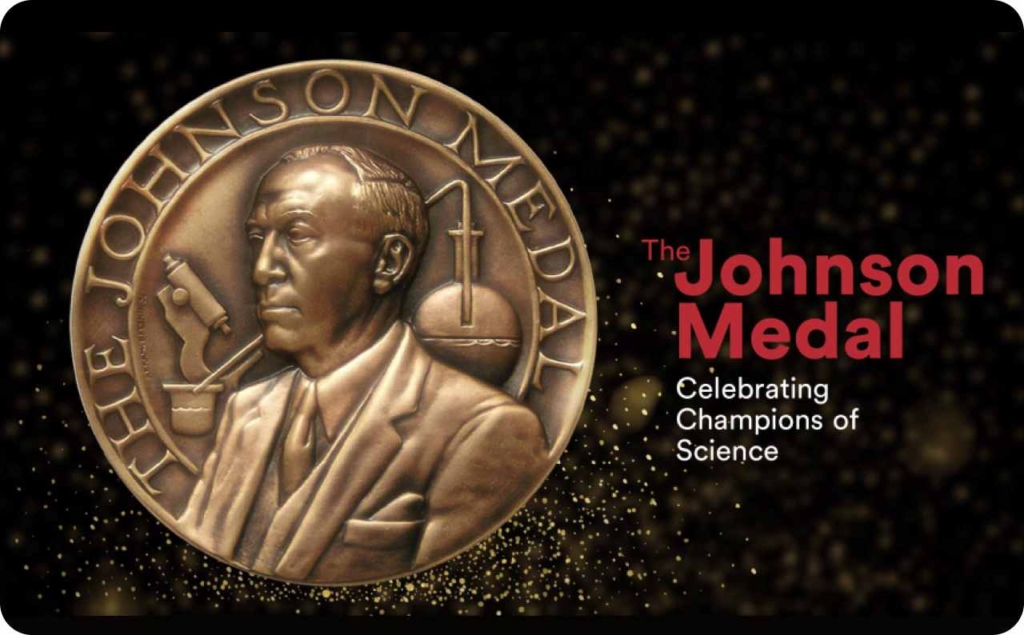
Photo Source: Johnson & Johnson
Best practice takeaway: True omnichannel execution adapts creative format, tone, and message structure to each channel, while reinforcing a unified brand narrative. Consistency doesn’t mean sameness; it means orchestration.
Sanofi: AI-driven personalization at scale
Sanofi’s cutting-edge digital advertising model shows how AI, machine learning, and real-time data are reshaping healthcare marketing. Their campaigns incorporate behavioral signals, geo-contextual targeting, and predictive analytics to customize messaging across digital platforms without compromising patient privacy.
Key innovations:
- AI segmentation: Patient personas built from anonymized browsing behavior and healthcare interaction data
- Automated creative optimization: Ad variants automatically served based on device, time of day, content type, and prior engagement
- HIPAA-safe personalization: No identifiable health data used; compliance achieved through aggregated modeling and consent-based interactions.
Results:
- +61% conversion uplift in lead-gen campaigns for clinical trial recruitment
- 3x improvement in ad recall compared to demographic-only targeting
- Reduced media waste by 28% through dynamic spend optimization
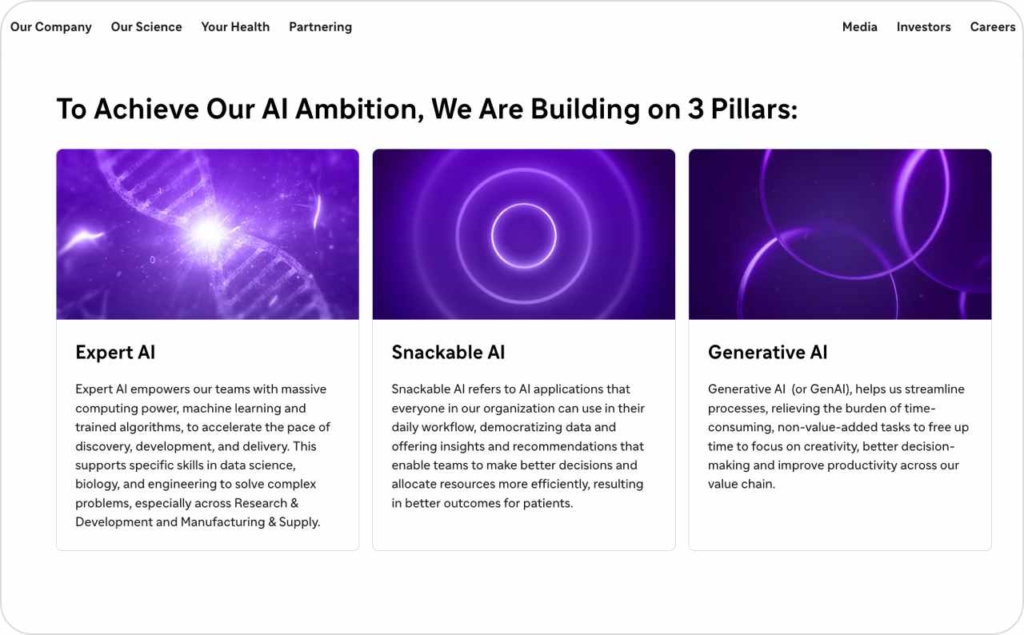
Photo source: Sanofi
Best practice takeaway: AI doesn’t replace creativity, it amplifies strategic precision. When compliance and data ethics are prioritized, automation becomes a powerful engine for scale and relevance in health advertising.
Public health on TikTok: Reaching the next generation
The pandemic underscored the importance of meeting patients where they are, especially younger audiences who distrust traditional media. Government agencies like the CDC and WHO, along with hospital systems, have since adopted platforms like TikTok to deliver health messages using short-form video, influencers, and community trends.
Success example: The “#IGotMyShotSG” TikTok campaign, driven by collaborations with healthcare workers and creators, reached 4 million video views, with a measurable lift in appointment bookings in targeted zip codes.
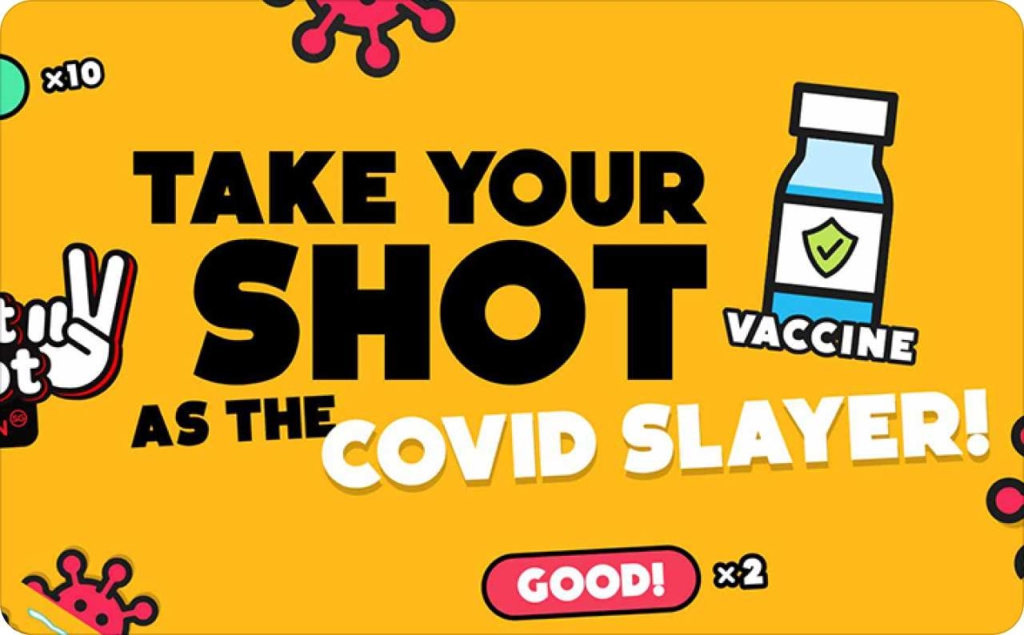
Photo source: “#IGotMyShotSG” TikTok campaign
Best practice takeaway: Emerging platforms aren’t “too playful” for serious health topics — they’re essential tools for emotional storytelling and peer-to-peer credibility among Gen Z and Millennials. The key is relevance, not formality.
Strategies for successful healthcare advertising
Crafting healthcare ads that connect emotionally, deliver value, and stay within regulatory boundaries isn’t easy, but it’s not impossible. With the right mix of strategy, structure, and cross-functional collaboration, you can turn compliance challenges into creative opportunities.
Balancing creativity with compliance
To help you maintain creative integrity while meeting FDA guidelines and internal review standards, smart agencies like TRAFFIK Health adopt a step-by-step, structured process. It starts with embedding regulatory checklists into the ideation stage. Before concepts hit the storyboard, they’re already cross-checked for dosage claims, risk language, and visual compliance triggers.
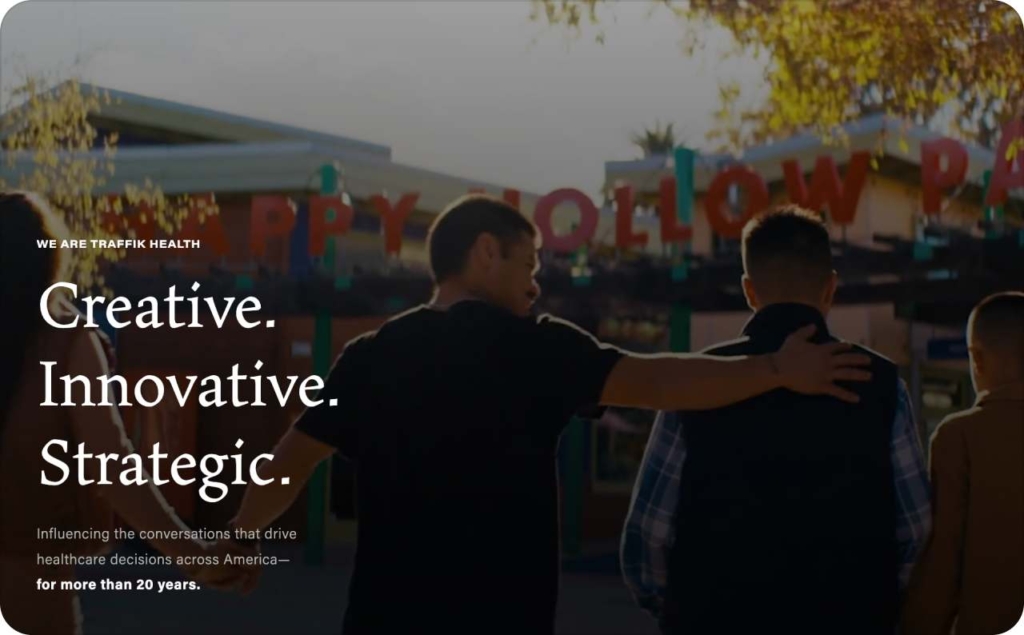
Photo source: TRAFFIK Health
Tools such as compliance automation platforms and ICM checklists streamline legal review cycles, reducing back-and-forth delays. But the real differentiator lies in fostering an integrated legal-creative workflow. When legal experts join brainstorm sessions or review drafts collaboratively, rather than in isolation, it turns compliance from a barrier into a blueprint.
One useful approach is to apply a “two-lane strategy”: produce a highly creative version for early-stage client buy-in, and a parallel draft pre-aligned to compliance strategy. This gives room to sell emotion and concept first without sacrificing regulatory readiness later.
Integrating traditional and digital campaigns
Successful healthcare advertisers are shifting toward integrated campaigns that harmonize legacy formats with today’s digital-first environment.
Take Nielsen Healthcare’s findings: campaigns that combine traditional media with digital channels consistently see higher conversion rates and lower CPA. A recent example from CTR showed how aligning direct mail with programmatic retargeting lifted appointment bookings by 34%.
To achieve this level of synergy, start with a unified messaging strategy. That means ensuring your tagline, benefit claims, and visuals remain consistent whether someone sees a billboard, a LinkedIn carousel, or a mobile health app banner. Back-end coordination matters too, use cross-platform analytics to track which touchpoints are driving performance.
Agencies that succeed here don’t just translate digital ideas into offline versions — they engineer campaigns from the start to work across channels.
Tips for creative professionals in healthcare
First, give yourself room to breathe. Professionals who’ve thrived in this niche often credit structured creative time and clear feedback loops as key. One senior art director at CDM New York shared that “carving out protected creative space each week” helped her avoid burnout and keep ideas flowing.
Embrace tools that support both inspiration and precision. Moodboarding platforms, visual compliance guides, and regulatory reference decks help you validate ideas faster and defend them more effectively in client or legal reviews.
Also, invest in your creative career development beyond projects. Attend industry panels, participate in health-focused design challenges, and build a portfolio that demonstrates both storytelling finesse and regulatory awareness.
Understanding the challenges in healthcare advertising
Before great healthcare ads can inspire or convert, they have to survive the gauntlet of regulation, internal review, and creative constraint. From navigating FDA guidelines to keeping your team motivated under constant revision cycles, the path to a successful campaign is rarely linear. This section breaks down the three most common, and costly, barriers to high-performing healthcare advertising: compliance hurdles, creative limitations, and the human toll of burnout.
Regulatory compliance and legal hurdles
Healthcare advertising is governed by some of the strictest compliance standards of any industry. Agencies and internal teams must navigate rules from the FDA, EMA, and HIPAA when personal health data is involved. These regulations impact every part of your campaign — from message structure and visual design to channel placement and targeting strategy.
And the standards are only tightening. The FDA guidelines for pharma ads outline exactly what can and cannot be claimed, shown, or even implied in both consumer-facing and professional materials. That means every claim needs scientific backing, every risk must be disclosed, and even your imagery has legal implications.
Here’s how top performers flip that script. Companies like Pfizer have restructured their internal marketing operations to work side-by-side with compliance from day one, not after the storyboard is finished. They build regulatory roadmaps for each campaign that identify high-risk areas early, streamline medical-legal-regulatory reviews, and clarify what’s viable before ideas go into full production.
You can follow suit. Start with an ICM checklist — a simple tool that flags what can be said, what needs a citation, and how to position disclosures without breaking your message flow. Use compliance tools that guide writers and designers in real time. Make your legal team a strategic partner, not a late-stage gatekeeper.
While legal hurdles are one part of the challenge, the other lies within the creative process itself, especially when risk-aversion turns into repetition.
Create powerful health ads with AI
Promoting healthcare products or services isn’t just about visibility — it’s about building trust, credibility, and emotional connection. Your audience wants to feel understood, supported, and confident in the choices they make for their well-being.
With Zeely AI, you can quickly and easily generate high-impact video with AI video ads generator specifically crafted for the health industry. Whether you’re advertising supplements, fitness programs, wellness apps, or medical services, Zeely tailors your creative to fit the tone and goals of your campaign.
You’ll also gain access to a library of 150+ AI digital avatars, allowing you to choose the perfect digital spokesperson for your brand — from empathetic healthcare professionals to energetic wellness influencers. These avatars help bring your message to life in a way that feels human, authentic, and highly relatable.
Everything is optimized for the platform you choose — from engaging video ads for TikTok and Instagram to compelling search-focused visuals for Google. You can also automate your ad campaigns to drive better results. Zeely AI ensures every piece of content leads with clear value, emotional resonance, and a strong CTA that drives action — like “Book your consultation,” “Start your journey,” or “Get expert advice now.”

In just a few clicks, Zeely gives you everything you need to launch health campaigns that truly connect — with zero design experience required.
Creative limitations & repetitive campaign briefs
Healthcare creatives often find themselves stuck inside rigid frameworks: don’t use emotional triggers, avoid showing outcomes, fit your message between disclaimers. This turns many campaigns into cookie-cutter templates — visually polished, but creatively lifeless.
Leading agencies like Klick Health take a different approach. One technique they use is reverse briefing — a process where creatives rewrite the client’s objective in their own words before concepting begins. This opens up new perspectives and makes room for storytelling within the limits.
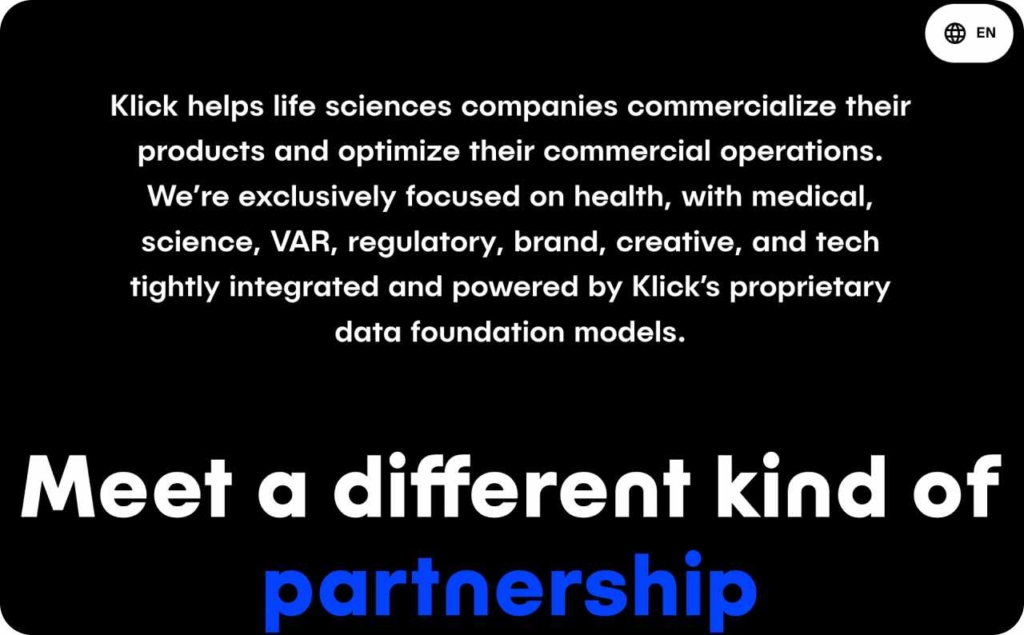
Photo source: Klick Health
Another winning tactic is constraint-led ideation. Instead of hiding the restrictions, teams design around them. Have a boxed warning that can’t be avoided? Turn it into a feature — use animation, narrative framing, or visual metaphor to make it part of the story rather than a blocker.
Top pharma brands are also leveraging modular content labs, where small campaign components are pre-approved and interchangeable. This lets teams test variations faster while still staying within compliance.
Start each brief with a single challenge: how do we make this regulation part of the concept, not just a limitation?
Work-life and industry pressures
Late nights. Back-to-back revisions. The same ad version number hitting double digits. Because every campaign is reviewed by legal, medical, regulatory, and brand teams, often in rounds, deadlines stretch, pressure mounts, and work-life balance erodes. In an MM+M industry study, 61% of healthcare agency professionals reported working overtime at least once a week, often due to unpredictable feedback loops and unclear ownership.
For junior creatives, the result is even tougher. Many enter the field eager to do purpose-driven work, only to find themselves drowning in revisions and disconnected from the big-picture impact.
Some teams are taking a smarter path. Forward-thinking agencies are shifting from reactive production to sustainable creative workflows. That means building buffer time for legal reviews, enforcing no-weekend-revision policies, and cross-training creatives to understand the basics of regulatory-safe messaging early on.
Leadership matters too. Teams that encourage open dialogue, set realistic delivery windows, and support mental health through pulse checks or mental health days are seeing better output and better retention.
Some agencies now run HR-led burnout audits or anonymous surveys to track and improve workload balance. It’s not just about wellness — it’s about keeping the ideas flowing when the pressure is high.
Because the best healthcare campaigns don’t just come from legal clarity or smart frameworks. They come from energized creatives who feel supported, trusted, and empowered to do work that matters.
Conclusion
Success lies in striking the right creative vs. regulatory balance. Campaigns that resonate, like those from Kaiser Permanente or CVS Health, aren’t just emotionally compelling; they’re also built on solid compliance frameworks and collaborative workflows between legal and creative teams.
Embrace multi-channel synergy. Don’t treat digital and traditional campaigns as separate efforts. Instead, align them under a single strategy, ensuring message consistency, measurable outcomes, and optimized reach.
Invest in your people. Whether you’re a senior strategist or a junior copywriter, staying inspired within a regulated space demands support, growth opportunities, and creative breathing room.
Also recommended
